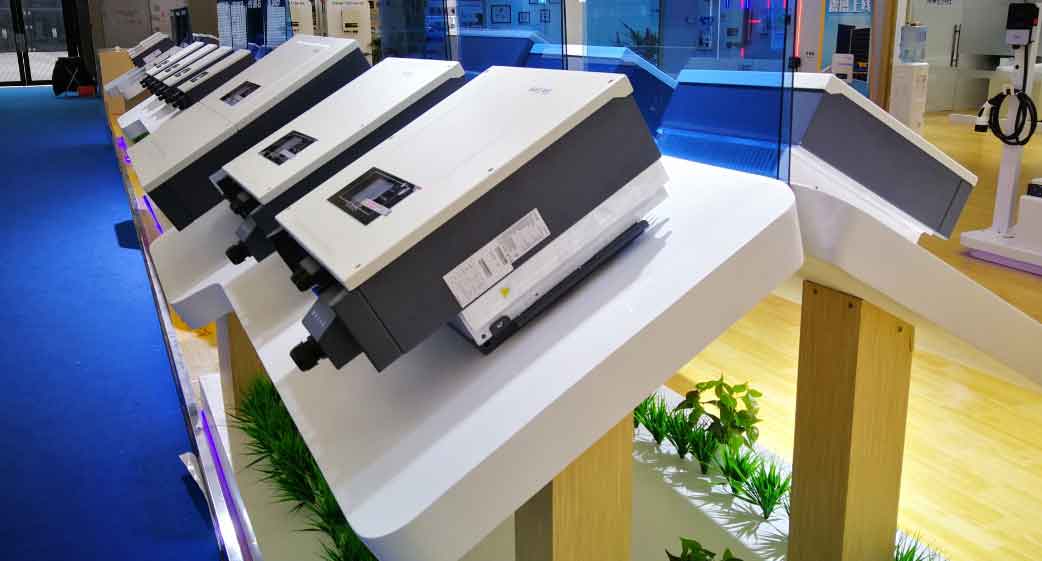As a pioneer in sustainable energy solutions, our company, Growatt, has achieved a milestone by securing the top position globally in shipments of residential photovoltaic (PV) inverters and user-side energy storage inverters. This accomplishment, validated by S&P Global’s 2022 rankings, reflects our relentless focus on innovation, strategic localization, and industry leadership.
Core Competitiveness in Energy Storage Inverters
Energy storage inverters serve as the backbone of modern distributed energy systems, enabling efficient DC-to-AC conversion and bidirectional energy flow. Our products, spanning residential, commercial, and microgrid applications, prioritize three key metrics:
- Conversion Efficiency (η): [ \eta = \left( \frac{P{\text{out}}}{P{\text{in}}} \right) \times 100\% ] Our latest energy storage inverters achieve η > 98.5%, minimizing energy loss during operation.
- Response Time (t): Critical for grid stability, our inverters switch between grid-tied and off-grid modes in <10 ms, ensuring uninterrupted power supply.
- Cycle Life (N): [ N = \frac{E{\text{total}}}{E{\text{rated}}} ] With N > 6,000 cycles at 80% depth of discharge (DoD), our battery-integrated systems outperform industry averages by 20%.

Market Penetration and Product Portfolio
Our energy storage inverters dominate 180+ countries, addressing diverse needs such as peak shaving, backup power, and renewable integration. Key product categories include:
| Product Line | Power Range | Key Markets | 2022 Shipments |
|---|---|---|---|
| Residential ESS Inverters | 3–10 kW | Europe, North America | 1.2 million units |
| Commercial ESS Inverters | 20–100 kW | Asia-Pacific, Africa | 320,000 units |
| Microgrid Controllers | 100–500 kW | Islands, Rural Areas | 45,000 units |
Technological Advancements
1. Hybrid Topology Design
Our proprietary hybrid architecture combines PV and battery inputs into a single energy storage inverter, reducing system complexity by 30%. The topology is governed by: [ P{\text{total}} = P{\text{PV}} + P{\text{battery}} – P{\text{losses}} ] where ( P_{\text{losses}} ) includes switching and thermal losses, minimized through advanced SiC MOSFETs.
2. AI-Driven Energy Management
Embedded machine learning algorithms optimize energy dispatch based on real-time data: [ \text{Objective Function: } \min \left( \sum{t=1}^{24} C{\text{grid}}(t) \cdot E{\text{purchased}}(t) – R{\text{feed-in}}(t) \cdot E{\text{sold}}(t) \right) ] where ( C{\text{grid}} ) = time-varying electricity price, and ( R_{\text{feed-in}} ) = feed-in tariff.
Supply Chain Localization in Huizhou
Relocating all manufacturing to Huizhou’s Huiyang District has amplified our “anchor tenant” effect, attracting 12 suppliers to establish facilities within a 50-km radius. The localized ecosystem reduces logistics costs by 18% and shortens lead times by 25%.
Supplier Network Analysis
| Component | Local Suppliers | Cost Reduction | Delivery Time |
|---|---|---|---|
| Power Semiconductors | 3 | 12% | 15 → 11 days |
| Lithium Batteries | 2 | 9% | 20 → 14 days |
| Enclosures | 4 | 7% | 10 → 7 days |
Global Applications and Case Studies
1. Industrial Peak Shaving (Germany)
A manufacturing plant deployed our 50-kW energy storage inverters, achieving:
- Energy Cost Savings: €120,000/year via load shifting.
- ROI Period: 3.2 years, calculated as: [ \text{ROI} = \frac{\text{Annual Savings}}{\text{Initial Investment}} \times 100\% = \frac{120,000}{384,000} \times 100\% = 31.25\% ]
2. Off-Grid Electrification (Sub-Saharan Africa)
A solar-storage microgrid powered by our 200-kW inverters now serves 2,500 residents, with:
- System Capacity: 1.2 MWh
- Energy Access Cost: $0.22/kWh vs. diesel’s $0.65/kWh
R&D Investment and IP Strategy
With 1,100+ engineers across Shenzhen, Huizhou, and Xi’an, we allocate 4.6% of annual revenue to R&D. Patent filings focus on:
- Topology Optimization (38 patents)
- Thermal Management (29 patents)
- Grid Synchronization (24 patents)
Policy Synergy and Future Roadmap
China’s 14th Five-Year Plan for Renewable Energy, targeting 30 GW of new energy storage by 2025, aligns with our expansion strategy. Upcoming initiatives include:
- Gigafactory Construction: Doubling Huiyang’s annual capacity to 6 million inverters by 2025.
- Solid-State Battery Integration: Partnering with material suppliers to develop 400 Wh/kg battery packs.
Conclusion
As the global energy transition accelerates, energy storage inverters will remain central to decarbonizing power systems. Through continuous innovation, vertical integration, and ecosystem collaboration, we are positioned to sustain leadership in this transformative era.
Note: All financial and technical metrics are based on internal data and third-party audits.
